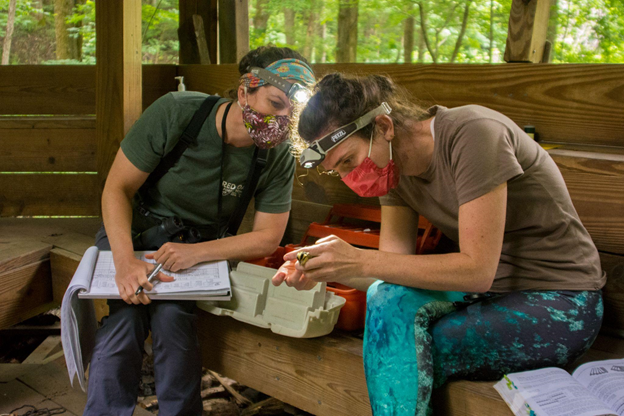
Erin Canter found her way to the Great Smoky Mountains Institute at Tremont, in eastern Tennessee, from what she describes as a very “stereotypical science” background: white coat, gloves, sequencing DNA in a lab. But “that didn’t quite do it for me,” she says.
After six months spent mostly outdoors living in a tent while leading youth environmental education crews, “I heard about this citizen science thing,” Canter says. Today, she works with volunteers doing citizen science a as Manager of Science Literacy and Research at the Institute, a private nonprofit and residential environmental education center in Great Smoky Mountains National Park.
Volunteers in the national parks are gathering data on the plants and animals around them and participating in ongoing research studies aimed at revealing new things about the world around us. Collectively, this is called citizen science.
Beyond the data these volunteers gather, Canter says involving volunteers in community science is a way for people to find their own answers to big questions like how to get the tools to address environmental injustices. The national parks, where millions of visitors explore nature every year, might just be the perfect place to get started with citizen science.
Take Part: Join iNaturalist on SciStarter
Discovering Biodiversity in Great Smoky Mountains National Park
Great Smoky Mountains National Park, which spans more than half a million acres in Tennessee and North Carolina, was the nation’s most visited national park in 2020. It’s also the most biodiverse park in the National Park System. In the park’s namesake forested peaks, professional scientists and volunteers come together to create a rich and inviting place for kids to do community science.
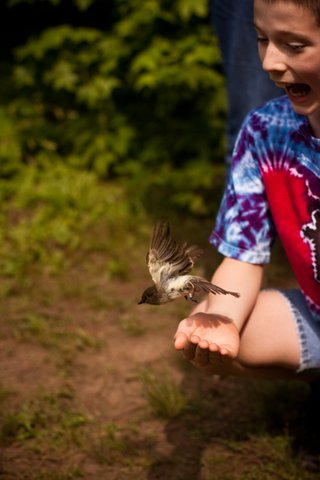
Will Kuhn agrees. Like Canter, Kuhn’s work with a private nonprofit, Discover Life in America (DLiA), brings him into regular contact with the vast diversity of species that make their homes in the park. DLiA was founded largely to manage the All Taxa Biodiversity Inventory (ATBI), a pioneering effort to catalog the estimated 80,000 to 100,000 species in Great Smoky Mountains National Park.
So far, with volunteer support, the ATBI has helped to catalog nearly half of the more than 20,000 officially documented species known to live in the park. The project has even catalogued a thousand species new to science, including 18 microscopic tardigrades, or water bears. Kuhn recommends that families and school groups visiting the park “go on a walk and upload everything you can find” using the iNaturalist app. “It’s so cool to have this thing in your pocket that can identify 90 percent of species,” he says.
To involve students in their own biodiversity surveys on school grounds, DLiA has partnered with the Tennessee Valley Authority to develop the iScience citizen science program. “iScience is a mini-version of what we’re trying to do in the park,” says Kuhn. Students in grades
5 through 8 use the iNaturalist app to observe species and record their finds, during events called Bioblitzes. These are public events held for the purpose of finding and identifying as many species as possible within a given area during a short period of time. They’re a great introduction to citizen science and they happen frequently at locations throughout the National Park System.
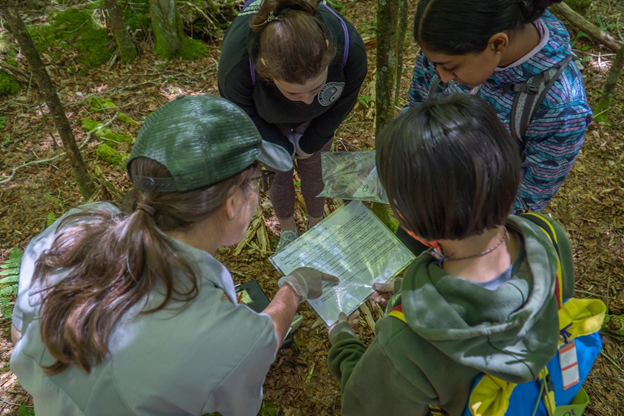
Giving Back through Community Science
For the families who participate in citizen science in the park, the impact is clear. Many families take on multiple projects and come back again and again. “It’s an investment in this community over time,” Canter says.
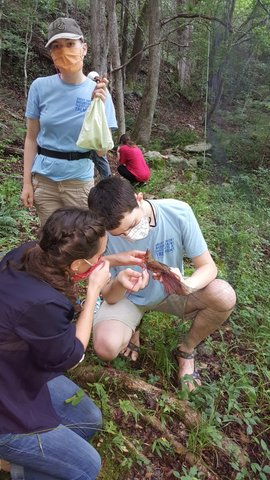
Projects that the Great Smoky Mountains Institute at Tremont offers include bird banding, monarch tagging and salamander monitoring, along with a wide array of other experiential opportunities for children and educators. Tracking seasonal cycles through phenology monitoring, volunteers watch how climate change impacts things like leaves changing color and record those observations in the USA National Phenology Network’s Nature’s Notebook app. Some families “still come back and visit their trees,” Canter says.
Metcalfs are one of those families. Karen Metcalf and her son Daniel, who’s now in high school, have volunteered since 2013, when Daniel was 9. They keep careful watch over a phenology plot, an small area representing different elevations and forest types that volunteers visit weekly during spring and fall to monitor seasonal changes.
Take Part: Join Nature’s Notebook on SciStarter
The Metcalfs also help out with banding birds in the park, like the Louisiana Waterthrush, to track annual migration patterns. One of Daniel’s most memorable volunteer moments was the first time he got to hold a bird, he says. During the Covid-19 pandemic, the Metcalfs became one of a few families able to keep the research project going.
Karen and Daniel will also soon be leading a volunteer monarch tagging team in the Cades Cove area of the park. “We’ll teach them to use nets, safety information and a little about monarchs,” says Karen, as well as how to identify different butterfly species using field guides. They’ll be securing tags from Monarch Watch and drawing on their four years of tagging experience to track monarchs through the current migration season.
Our National Parks: A Living Laboratory
The Dragonfly Mercury Project is just about as kid-friendly as a citizen science project can be: high-impact science knee-deep in the mud, hunting for dragonfly larvae. With Great Smoky Mountains National Park and more than 100 other parks participating, teachers and families everywhere are sure to find ways for their students to get involved.
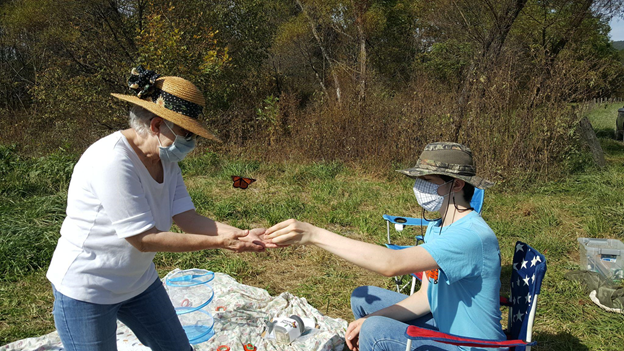
Of more than 4,500 dedicated volunteers that the National Park Service tracked from 2013-2018, most were children from school groups and programs like the Youth Conservation Corps (YCC). Not only did thousands of kids, teens and young adults learn hands-on science, they contributed substantially to a groundbreaking study confirming that dragonflies can be used to measure mercury pollution by predicting mercury levels in other species like fish, birds and amphibians. Researchers drew on the data collected by citizen scientists to publish the first study of mercury pollution in the National Park System, showing the extent of the impact of this neurotoxin on aquatic food webs and on the health of our streams, rivers and lakes.
Colleen Flanagan Pritz, an ecologist with the National Park Service, coordinates the program at the national level in collaboration with the U.S. Geological Survey, the University of Maine and other partners. She calls the national parks a “living laboratory” for students of all ages to get involved with science and conservation. “There’s a big wow factor,” she says. ”They’re actually contributing to a real science project.”
Get Involved
If you’re visiting one of the 423 sites managed by the National Park Service this year, opportunities for community science abound. Even if you can’t visit in person, check out the National Park Service’s virtual learning resources for engagement with projects like the Dragonfly Mercury Project from your home or classroom.
If you’re joining iNaturalist, don’t forget the project is a SciStarter affiliate. Make sure you earn credit for your participation in your SciStarter Dashboard.
You can earn credits with Nature’s Notebook, too.
For more information:

